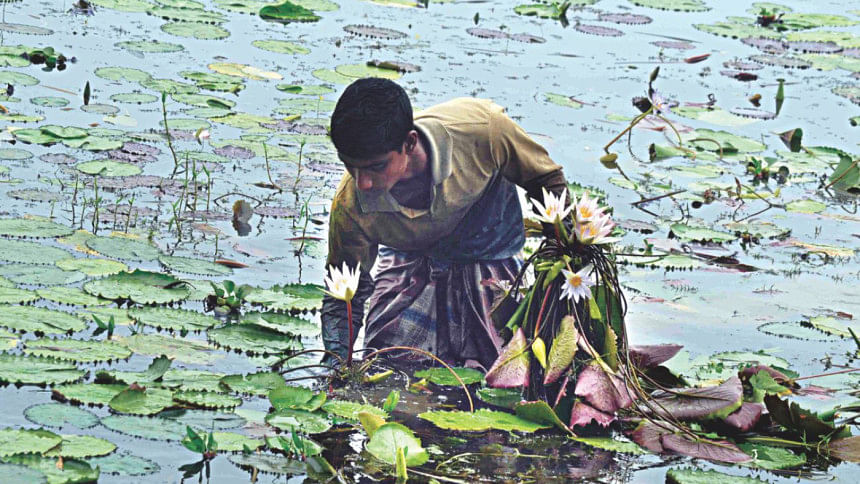Water lilies mean solvency to many haor people in monsoon

When skies are grey during the monsoon months, the white faces of water lilies brighten the liquid landscape of Hakaluki Haor. But the flowers which populate large areas within the haor do more than buoy spirits. For many, water lilies mean survival.
"Five in our family spend morning to night collecting lilies," says Abdur Razzak from Chandpur village in Sylhet's Fenchuganj upazila. "Later, my wife, son and daughter clean and sort them into bundles ready for sale."
His neighbour, farmer Ayub Ali is also involved in trading the common kitchen ingredient. "From late in the afternoon," he says, "with the lilies tied into bundles we sell them on the side of the Dhaka – Sylhet highway."
According to Ayub, a bundle of ten or so lily stems sells for up to Tk. 40, a rate that provides him between Tk 300 – 500 per day as minimum daily earnings.
In this way, the humble water lily is a valuable lifeline for thousands of struggling and economically marginal families across Kulaura, Juri and Barlekha upazilas in Moulvibazar and Fenchuganj and Osmaninagor upazilas in Sylhet; and the additional income source is particularly welcome during the rainy season when would-be labourers and farmers in the haor areas find other work hard to come by.
It is such seasonally unemployed workers who rely on lily harvesting the most, as a means to maintain solvency through the employment lean season.
Fortunately there is no shortage of demand. In towns of villages, lilies, known as a nutritious food, are mashed, fried and added to various traditional dishes.
Divisional deputy director of the livestock department Dr. Achintya Kumar Saha says many poor farmers in Sylhet's haor areas maintain their livelihoods through lily harvesting and sales at this time of the year.

 For all latest news, follow The Daily Star's Google News channel.
For all latest news, follow The Daily Star's Google News channel. 



Comments